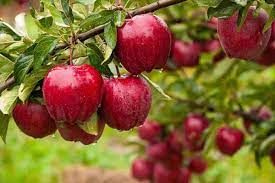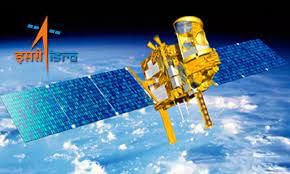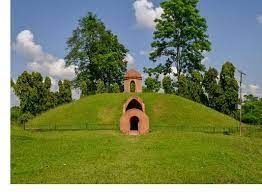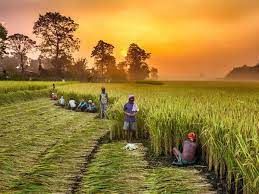UPSC Daily Current Affairs- 6th March 2023 | Current Affairs & Hindu Analysis: Daily, Weekly & Monthly PDF Download
GS-I
Assam’s Maidams meet UNESCO technical requirements for heritage centre
Why in News?
Assam’s pyramid-like structures known as moidams or maidams have met all the technical requirements of UNESCO’s World Heritage Centre.
Charaideo Maidams
- The Charaideo maidams represents the late medieval (13th-19th century CE) mound burial tradition of the Tai Ahom community in Assam.
- The Ahoms preferred to place the departed family members at Charaideo where the first king Sukapha was laid to rest.
- The historical chronicles inform that wives, attendants, pet animals and huge quantity of valuables were buried with the departed kings.
- The Charaideo Maidams enshrine the mortal remains of the members of the Ahom royalty, who used to be buried with their paraphernalia.
- After the 18th century, the Ahom rulers adopted the Hindu method of cremation and began entombing the cremated bones and ashes in a Maidam at Charaideo.
- Out of 386 Maidams explored so far, 90 royal burials at Charaideo are the best preserved, representative of and the most complete examples of mound burial tradition of the Ahoms.
Architecture details
- Architecturally it comprises a massive underground vault with one or more chambers having domical superstructure.
- It is covered by a heap of earthen mound and externally it appears a hemispherical mound.
- At the top of the mound a small open pavilion chow-chali is provided.
- An octagonal dwarf wall encloses whole maidam.
Source: The Hindu
Apple cultivation

Why in News?
Demand for apples from Jammu & Kashmir and Himachal Pradesh has shot up 30% as the earthquake in Turkey has halted shipments of the fruit to India.
About Apple cultivation:
- In India apple is primarily cultivated in Jammu & Kashmir; Himachal Pradesh; the hills of Uttar Pradesh and Uttaranchal.
- It is also cultivated to a small extent in Arunachal Pradesh; Nagaland; Punjab and Sikkim.
- Climatic conditions required
- The apple is a temperate fruit crop.
- However, in India, the apple-growing areas do not fall in the temperate zone but the prevailing temperate climate of the region is due to the Himalayan ranges and high altitudes.
- Temperature: The average summer temperature should be around 21-24 degrees C during the active growth period.
- It can be grown at an altitude of 1500- 2700 m above sea level.
- Rainfall: Well-distributed rainfall of 1000-1250 mm throughout the growing season is most favourable for the optimum growth and fruitfulness of apple trees.
- Soil: Apples grow best on well-drained, loamy soils.
Source: Economic Times
GS-II
One Nation, One Challan Initiative
Why in News?
The Gujarat Govt. informed High Court that it’s setting up virtual traffic courts under ‘One Nation One Challan’ initiative while hearing a PIL on the matter.
What is the One Nation, One Challan initiative?
- One Nation, One Challan is an initiative of the Ministry of Road Transport and Highways.
- It aims to bring all related agencies, such as the traffic police and the Regional Transport Office (RTO), on one platform, to enable seamless collection of challans as well as data transfer.
- The integrated system uses the CCTV network to detect traffic violations and retrieve the registration number of the offending vehicle from applications like VAHAN and SARATHI.
- An e-Challan is then generated with the relevant penalty amount, and sent to the mobile number linked with the vehicle.
What did the Gujarat govt inform?
- In Gujarat, the initiative is operational in three commissionerate areas of Ahmedabad, Rajkot and Surat since January this year and implementation at Vadodara is underway.
How does the integration help?
- Prior to the integration, details of vehicle ownership from a different state could not be accessed through the CCTV network for penalization.
- Integration of all states’ RTO data and traffic police data with the support of NIC servers allows access to vehicle registration and related data for violators from different states.
- Challans will be sent directly to the mobile number registered with the vehicle.
- NIC is set to launch its own application for e-Challan delivery.
How do virtual traffic courts work?
- Virtual courts are aimed at eliminating the presence of litigants in the court.
- An accused can search their case on the virtual court’s website. Upon successful payment of the fine, the case will be shown as disposed of.
- For now, one court is in the process of being designated as a virtual court for the whole of Gujarat.
Source: The Hindu
Army Court martial
Why in News?
An Army court martial in Jammu and Kashmir has recommended life imprisonment for a Captain in connection with the killing of three men in a staged encounter at a remote hilly village at Amshipura in the Shopian district of south Kashmir in July 2020.
About Court martial:
- A court-martial has been granted the authority to judge the guilt of members of the armed forces which is subject to military law, and, in the case, if the accused or defendant is found guilty, to decide upon punishment which they have to carry.
What is the legal Provision related to court martial in India?
- The Armed Forces Tribunal Act 2007 was passed by the Parliament and led to the formation of the Armed Forces Tribunal.
- This tribunal is empowered with the adjudication of disputes and complaints concerning the commission, appointments, enrolments and conditions of service in respect of persons subject to the Army Act, 1950, The Navy Act, 1957 and the Air Force Act, 1950
- Composition of the Armed Forces Tribunal
- The Judicial Members are retired High Court Judgesand Administrative Members are retired Members of the Armed Forces who have held the rank of Major General/ equivalent or above for a period of three years or more.
- Judge Advocate General (JAG) who has held the appointment for at least one year is also entitled to be appointed as the Administrative Member.
- There are four kinds of courts-martial in India namely; General Court Martial (GCM), District Court Martial (DCM), Summary General Court Martial (SGCM) and Summary Court Martial (SCM).
- Under the Army Act, army courts can try personnel for all kinds of offences, except for murder and rape of a civilian, which are primarily tried by a civilian court of law.
- Pardoning power: The president of India can use his judicial power under Article 72 of the Constitution to pardon, reprieve, respite or remission of punishment or sentence given by a court martial.
Source: Times of India
GS-III
Foldscope: A new paper microscope
Why in News?
Researchers from the Indian Institute of Science (IISc), Bengaluru, have developed a cheap paper microscope (foldscope) connected to a smartphone camera that could find wider application in a variety of research areas, and in some cases potentially replace more expensive equipment.
What is Foldscope?
- The Foldscope is a handheld microscope made mostly of paper that can be easily linked to a smartphone camera.
- It has a magnification of around 140x and can identify objects just 2 micrometres wide.
- It was first created by researchers at Stanford University in 2014.
- IISc version of Foldscope costs around Rs 400, much cheaper than that of Stanford’s one.
How is Foldscope comparable to electron microscope?
- The researchers found that Foldscope could capture the roundness and aspect ratio of an object to within 5% of those imaged by a state-of-the-art instrument called a scanning electron microscope (SEM).
- SEM costs more than Rs 50 lakh each.
- Preparing a sample for study through a Foldscope takes less than an hour, whereas the same process for an SEM was “tedious and time-consuming”.
Potential applications
- Foldscopes can be used in pharmaceuticals (to inspect drug products), environmental science (to observe pollutants), and cosmetics (to observe powders and emulsions), among other fields.
- They can also be used to study “soil particles’ morphology,” which can “help understand soil structure, nutrient availability, and plant growth” in agriculture.
- It allows for in-field soil analysis and visualisation of soil structure per Indian Standard Soil Classification System which earlier required bulky microscopes with high resolution.
Source: PIB
Agriculture: India Needs Green Revolution 2.0
Why in news?
The statement made by the then viceroy, George Curzon in the early 20th century, that the Indian economy, particularly agriculture, is a gamble on the monsoon, may need to be rephrased in modern times. More than the monsoon, it is temperatures that are emerging as a greater source of uncertainty for farmers. Today, what India needs is Green Revolution 2.0.
The fact today: Rising Temperatures Threaten Winter-Spring Harvest in India
- Irrigation Prevents Winter-Spring Drought: The country now produces more foodgrains during the winter-spring season than in the post-monsoon season shows how irrigation has helped to prevent drought.
- Rising Temperatures Threaten Winter-Spring Harvest: However, the rising temperatures in February and March pose a threat to the winter-spring harvest, which was previously considered safe from rainfall-related problems.
- Shorter Winters, Earlier Summers Increase Crop Risks: Although thunderstorms and hail have always been a risk for winter-spring crops, they are now overshadowed by the risks from shorter winters and earlier summers.
Heat Waves and wheat yield at present
- Surge in temperature last year: The impact of temperature surge was seen in March 2022, when the wheat crop had just entered its final grain formation and filling stage. The heat stress led to early grain ripening and reduced yields.
- Record-high temperatures in February this year: In February of this year, the maximum temperatures recorded were the highest ever seen. This is attributed to the absence of active western disturbances that bring rain and snowfall over the Himalayas, whose cooling effect percolates into the plains.
- Rising Temperatures in Wheat-Growing Areas: Currently, minimum and maximum temperatures in most wheat-growing areas are ruling 3-5 degrees Celsius above normal. The next couple of weeks or more are going to be crucial. As long as the maximum remains within 35 degrees, there should be no danger of March 2022 repeating itself.
Green Revolution in India
- In India, the Green Revolution was mainly led by M.S. Swaminathan.
- In 1961, M.S. Swaminathan invited Norman who suggested a revolution like what has happened in Mexico, Japan, etc in Indian agriculture.
- Green Revolution was introduced with the Intensive Agriculture District Program (IADP) on an experimental basis in 7 districtin India.
- In 1965-66 the HYV program was started which is the starting point of the Green Revolution in India.
- The Green Revolution, spreading over the period from 1967-68 to 1977-78, changed India’s status from a food-deficient country to one of the world’s leading agricultural nations.
- The Green Revolution resulted in a great increase in production of food grains (especially wheat and rice) due to the introduction into developing countries of new, high-yielding variety seeds, beginning in the mid-20th century.
Why India Need another Green Revolution?
- Climate change and food insecurity: Climate change poses a significant risk to Indian agriculture. The changing weather patterns, extreme temperatures, and rainfall variations are causing unpredictability in crop production, leading to food insecurity and farmer distress.
- Declining Soil Fertility: Soil degradation and depletion of nutrients have affected the productivity of the land. It is necessary to develop crops that require less water and fertilizers and are disease-resistant.
- For example: The development of genetically modified (GM) cotton has led to higher yields, less pesticide use, and improved soil health.
- Price volatility: In addition to climate change, Indian farmers are also struggling with price volatility, as seen in the recent crash of onion and potato prices. This dual risk of climate and prices requires urgent attention from policymakers, farmers, and scientists to develop resilient crop varieties and effective crop planning and management.
- Sustainable crop varieties: The need of the hour is to develop crop varieties that can withstand extreme temperature and rainfall variations while yielding more with less water and nutrients.
- For instance: The use of precision agriculture techniques can help farmers manage their crops efficiently and minimize losses due to climate and price fluctuations.
- Coordinated efforts: Improving market intelligence and access to markets is also crucial to ensure that farmers receive fair prices for their produce. This will require a coordinated effort from both the government and private sector to create efficient supply chains and distribution networks.
- Success of the First Green revolution: The success of the first Green Revolution in India was built on scientific research, policy support, and effective implementation. Similarly, addressing the current challenges facing Indian agriculture will require a comprehensive approach that involves research, policy, and implementation at all levels of government and society.
Conclusion
India needs a new agricultural transformation to overcome the challenges it faces. Green Revolution 2.0 can help develop crops that are climate-resilient, require less water and fertilizers, and are disease-resistant. By investing in research and development of new technologies, India can achieve a more sustainable and profitable agriculture sector. Farmers must know what to plant, how to manage their crop at various stages under different stress scenarios, and when to sell. Agriculture for today and tomorrow cannot be the same as it was yesterday.
Source: The Hindu
Megha-Tropiques-1

Why in News?
The Indian Space Research Organisation (ISRO) will be undertaking a challenging experiment of a controlled re-entry of the decommissioned Megha-Tropiques-1 (MT1) satellite on March 7, 2023.
About Megha-Tropiques-1:
- Megha-Tropiques is an Indo-French Joint Satellite Mission for studying the water cycle and energy exchanges in the tropics.
- Objective: To understand the life cycle of convective systems that influence tropical weather and climate and their role in the associated energy and moisture budget of the atmosphere in tropical regions.
- It provides scientific data on the contribution of the water cycle to the tropical atmosphere, with information on condensed water in clouds, water vapour in the atmosphere, precipitation, and evaporation.
- With its circular orbit inclined 20 deg to the equator, the Megha-Tropiques is a unique satellite for climate research that should also aid scientists seeking to refine prediction models.
- The Megha-Tropiques has day, night and all-weather viewing capabilities; it passes over India almost a dozen times every day, giving scientists an almost real-time assessment of the evolution of clouds.
Megha-Tropiques carries the following four payloads:
- Microwave Analysis and Detection of Rain and Atmospheric Structures (MADRAS), an Imaging Radiometer developed jointly by CNES and ISRO
- Sounder for Probing Vertical Profiles of Humidity (SAPHIR), from CNES.
- Scanner for Radiation Budget (ScaRaB), from CNES.
- Radio Occultation Sensor for Vertical Profiling of Temperature and Humidity (ROSA), procured from Italy.
Source: The Hindu
What is meant by ‘Organoid Intelligence’?

Why in News?
Scientists at Johns Hopkins University (JHU) recently outlined a plan for a potentially revolutionary new area of research called “organoid intelligence”, which aims to create “biocomputers”:
What is an Organoid?
- Organoids are lab-grown tissues that resemble organs.
- They are three-dimensional structures usually derived from stem cells.
- They are smaller, simpler versions of an organ and can mimic the architecture and function of specific organs in the body.
- They can be crafted to replicate much of the complexity of an organ or to express selected aspects of it, like producing only certain types of cells.
- Organoids can range in size from less than the width of a hair to five millimeters.
What is meant by ‘Organoid Intelligence’?
- It refers to the ability of organoids to exhibit certain behaviors or responses that are indicative of intelligence, such as problem-solving, learning, or adapting to changing environments.
- It is an emerging field where researchers are developing biological computing using 3D cultures of human brain cells (brain organoids) and brain-machine interface technologies.
- These organoids share aspects of brain structure and function that play a key role in cognitive functions like learning and memory.
- They would essentially serve as biological hardware and could one day be even more efficient than current computers running AI programs.
- OI requires scaling up current brain organoids into complex, durable 3D structures enriched with cells and genes associated with learning and connecting these to next-generation input and output devices and AI/machine learning systems.
- OI requires new models, algorithms, and interface technologies to communicate with brain organoids, understand how they learn and compute, and process and store the massive amounts of data they will generate.
What are Biocomputers?
- They are a type of computer that use biological molecules, such as DNA or proteins, to perform computational tasks.
- These computers can perform certain operations much faster than traditional electronic computers and have the potential to revolutionize fields such as medicine and biotechnology.
- One type of biocomputer is a DNA computer, which uses strands of DNA to store and process information.
Source: The Hindu
|
44 videos|5271 docs|1113 tests
|
FAQs on UPSC Daily Current Affairs- 6th March 2023 - Current Affairs & Hindu Analysis: Daily, Weekly & Monthly
| 1. What are the three main subjects covered in the UPSC exam? |  |
| 2. What is the significance of General Studies-I (GS-I) in the UPSC exam? |  |
| 3. What does General Studies-II (GS-II) focus on in the UPSC exam? |  |
| 4. Which subjects are covered in General Studies-III (GS-III) of the UPSC exam? |  |
| 5. What is the importance of daily current affairs in the UPSC exam preparation? |  |





















